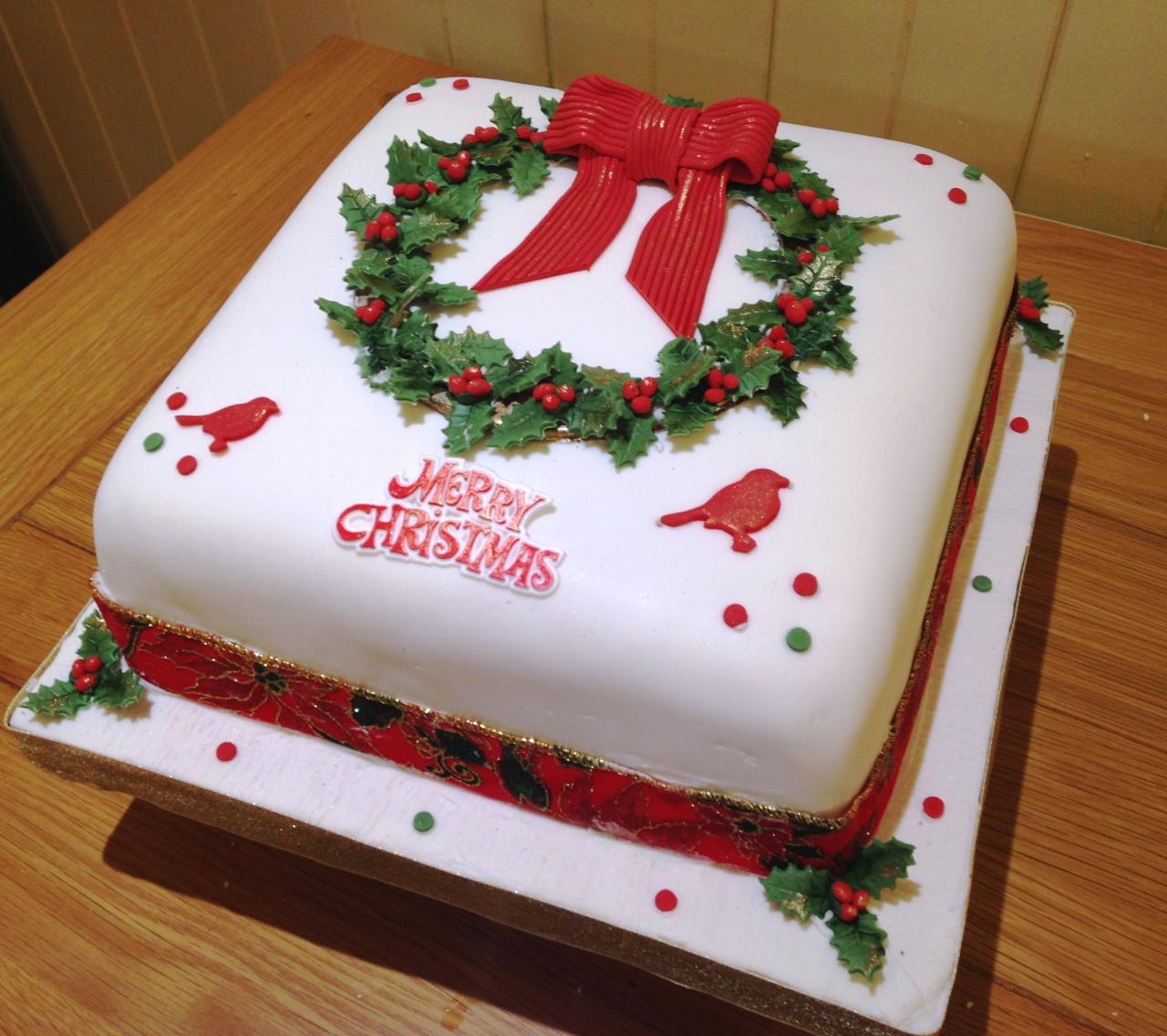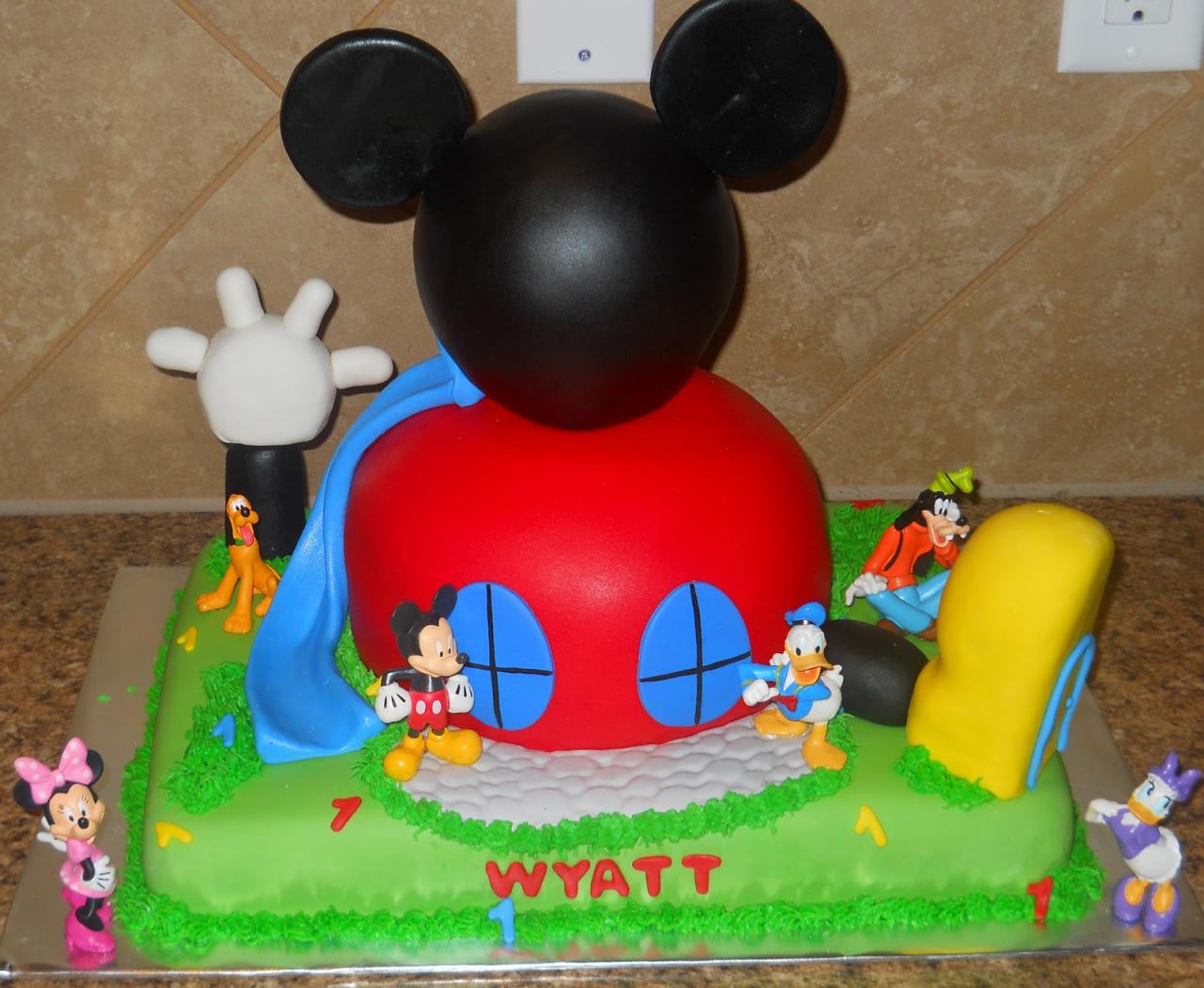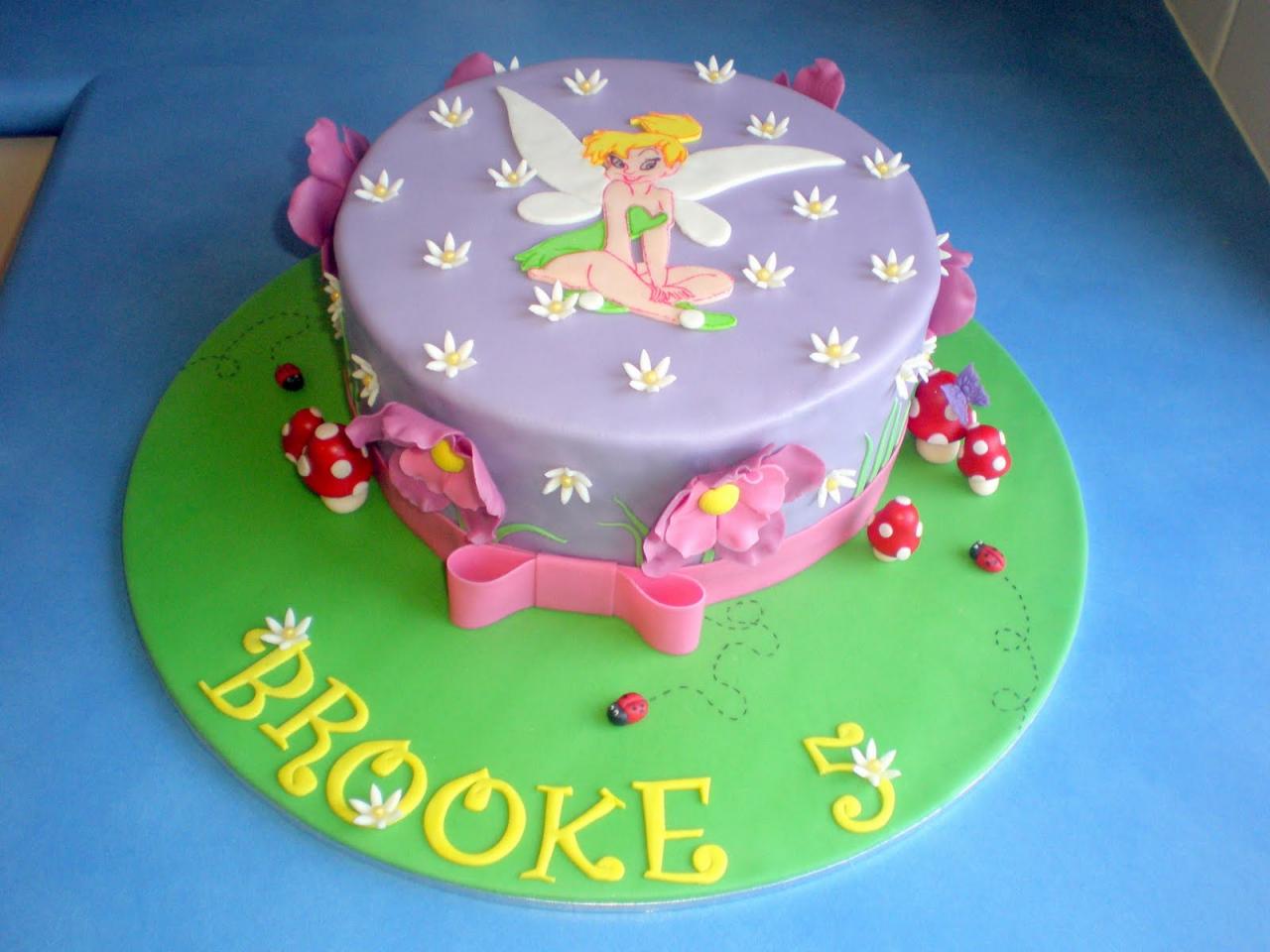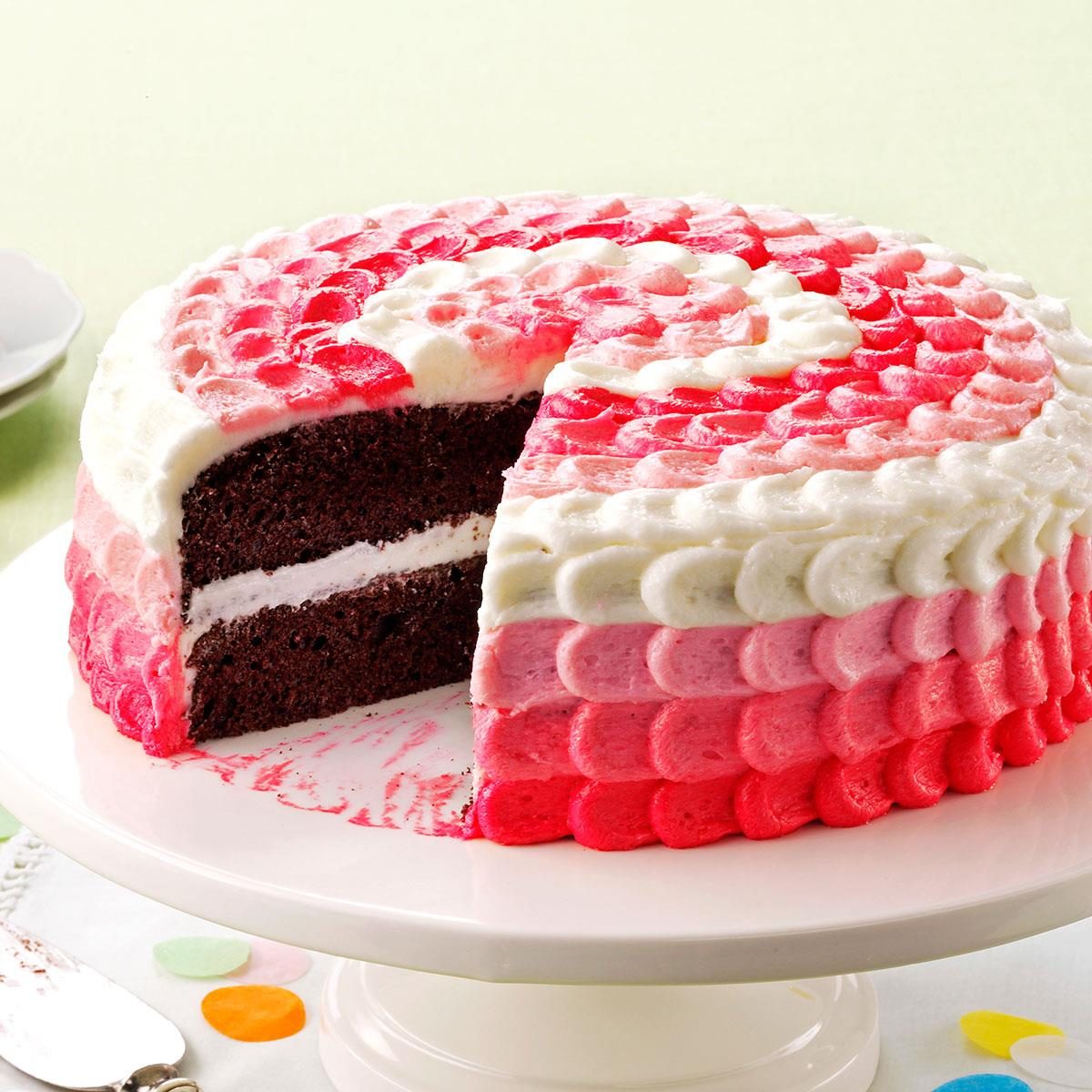Decorated Christmas cakes are a festive tradition that has evolved over centuries, becoming an integral part of holiday celebrations worldwide. From their humble beginnings to their elaborate modern incarnations, these edible masterpieces tell a story of creativity, symbolism, and the joy of the season.
The art of decorating Christmas cakes is a testament to the human imagination. Bakers and confectioners employ a vast array of techniques and materials to create cakes that are both visually stunning and deeply meaningful.
History of Decorated Christmas Cakes
The tradition of decorating Christmas cakes has a rich and multifaceted history, deeply intertwined with cultural and religious influences. Its origins can be traced back to medieval Europe, where guilds of bakers and confectioners played a pivotal role in shaping the development of this culinary art form.
Medieval Origins
During the Middle Ages, Christmas cakes were often simple in design, consisting of a basic dough flavored with spices and honey. Over time, as baking techniques and ingredients became more sophisticated, so did the ornamentation of these cakes. Guilds of bakers and confectioners competed to create the most elaborate and visually stunning cakes, often incorporating intricate designs, edible figurines, and symbolic motifs.
Religious Influences
The Christian symbolism associated with Christmas has had a profound impact on the development of decorated Christmas cakes. The use of red and green, for example, represents the blood of Christ and the evergreen foliage associated with eternal life. The star atop many Christmas cakes symbolizes the Star of Bethlehem, while the traditional round shape represents the unity of the Christian community.
Iconic Examples
Over the centuries, numerous iconic decorated Christmas cakes have emerged from different regions and eras. Some notable examples include:
- The German Stollen:A traditional German Christmas cake made with dried fruit, nuts, and spices, often topped with powdered sugar.
- The English Christmas Pudding:A steamed pudding made with a mixture of fruits, spices, and suet, often served with a flaming brandy sauce.
- The Italian Panettone:A tall, cylindrical cake made with candied fruit and raisins, often served with a dusting of powdered sugar.
Types of Decorations
Christmas cakes are a feast for the eyes, adorned with an array of intricate and whimsical decorations. From the classic to the contemporary, these embellishments transform ordinary cakes into edible works of art.
Frosting
Frosting, the quintessential Christmas cake decoration, comes in a myriad of flavors and textures. Buttercream, the most popular choice, is known for its smooth, creamy consistency and versatility. Fondant, a sugar paste, offers a smooth, sophisticated finish and can be molded into intricate shapes.
Ganache, a chocolate-based frosting, provides a rich, decadent touch.
Fondant
Fondant, a pliable sugar paste, has revolutionized cake decorating. It can be rolled out thinly and draped over the cake, creating a flawless, smooth surface. Fondant can also be sculpted into elaborate figures, flowers, and other decorative elements, adding a touch of whimsy and sophistication.
Sprinkles
Sprinkles, the quintessential festive decoration, add a touch of color and cheer to Christmas cakes. Available in a rainbow of hues and shapes, sprinkles can be scattered over the frosting or used to create intricate designs.
Edible Figurines
Edible figurines, such as Santa Claus, snowmen, and reindeer, add a playful touch to Christmas cakes. Made from sugar, chocolate, or marzipan, these figurines bring the festive spirit to life and are a delight for children and adults alike.
Other Decorative Elements
Beyond these classic decorations, Christmas cakes can be adorned with a myriad of other festive elements. Candied fruits, such as cherries and citrus peels, add a touch of color and sweetness. Marzipan, a pliable almond paste, can be shaped into intricate decorations or used to cover the cake entirely.
Edible glitter, gold leaf, and silver dragees provide a touch of opulence and glamour.The techniques and methods used in creating these decorations vary widely. Buttercream frosting can be piped into intricate designs using a variety of tips. Fondant can be rolled out, cut into shapes, or molded into three-dimensional figures.
Sprinkles can be scattered over the frosting or arranged in patterns. Edible figurines are often hand-crafted or purchased pre-made.
Design and Aesthetics
Decorating Christmas cakes is an art form that requires careful consideration of design principles and aesthetic elements. These elements work together to create a visually appealing cake that captures the spirit of the holiday season.
One important aspect of cake design is color. Christmas cakes often feature a festive palette of red, green, white, and gold. These colors can be used to create a variety of designs, from traditional to whimsical.
Texture is another important element of cake design. A variety of textures can be created using different frosting techniques, piping tips, and edible decorations. For example, a smooth buttercream frosting can be used to create a sleek and elegant look, while a textured buttercream frosting can add a touch of whimsy.
Composition is the final element of cake design to consider. The arrangement of the cake’s elements, such as the frosting, piping, and decorations, should create a visually balanced and appealing design. For example, a cake with a tall, elaborate centerpiece can be balanced by a border of smaller decorations.
Stunning and Innovative Christmas Cake Designs, Decorated christmas cakes
With a little creativity, you can create a Christmas cake that is both stunning and unique. Here are a few examples of innovative Christmas cake designs:
- A gingerbread house cake is a festive and fun way to celebrate the holidays. The cake can be decorated with a variety of gingerbread pieces, such as walls, windows, and a roof.
- A Christmas tree cake is a beautiful and elegant way to bring the Christmas spirit into your home. The cake can be decorated with green frosting, piping, and edible ornaments.
- A snowman cake is a cute and whimsical way to celebrate the holidays. The cake can be decorated with white frosting, piping, and edible accessories, such as a hat and scarf.
Symbolism and Meaning
Decorated Christmas cakes hold deep symbolic meanings and cultural significance. They embody the spirit of the holiday season, representing joy, love, and festive cheer.
Ornaments and Decorations
Each ornament and decoration on a Christmas cake carries a unique meaning. The evergreen tree, a symbol of life and resilience, is often used as a centerpiece. Candles represent light and hope, while bells symbolize the announcement of good news.
Fruit and Spices
Fruits and spices used in Christmas cakes are not only for flavor but also for their symbolic significance. Dried fruits like raisins and currants represent prosperity, while spices like cinnamon and nutmeg evoke warmth and comfort.
Anecdote
For many families, the tradition of baking and decorating Christmas cakes is a cherished ritual that evokes fond memories. The aroma of freshly baked cake fills the house, creating a sense of nostalgia and warmth. These cakes become a tangible reminder of the love and joy shared during the holiday season.
Techniques and Skills

Decorating Christmas cakes is an art form that requires precision, patience, and creativity. Whether you’re a seasoned baker or a novice enthusiast, mastering the techniques and skills involved will elevate your cakes to a whole new level of artistry.
To achieve professional-looking results, follow these step-by-step instructions and incorporate the tips and tricks provided.
Frosting Techniques
The frosting is the canvas upon which your cake’s design will come to life. Choose from a variety of frosting types, each with its own unique characteristics:
- Buttercream: A classic choice known for its smooth, creamy texture and versatility.
- Cream Cheese Frosting: A tangy, decadent option that pairs well with fruit and chocolate.
- Whipped Cream Frosting: A light and airy frosting perfect for delicate decorations.
- Royal Icing: A hard, glossy icing ideal for intricate piping and creating edible decorations.
Piping Methods
Piping is a technique used to create intricate designs and borders on cakes. Choose from a range of piping tips, each designed for a specific purpose:
- Round Tips: Used for creating dots, lines, and circles.
- Star Tips: Used for creating stars, rosettes, and swirls.
- Leaf Tips: Used for creating realistic leaves and flowers.
- Petal Tips: Used for creating delicate petals and ruffles.
Cake Decorating Tools
Invest in a few essential cake decorating tools to make the process easier and more enjoyable:
- Cake Turntable: Allows you to rotate the cake smoothly while frosting and decorating.
- Offset Spatula: Used for spreading frosting evenly and creating sharp edges.
- Piping Bags: Disposable or reusable bags used for piping frosting designs.
- Couplers: Used to attach piping tips to piping bags.
- Decorating Combs and Scrapers: Used for creating patterns and textures in frosting.
Presentation and Display: Decorated Christmas Cakes
Presentation and display play a crucial role in enhancing the overall appeal and festive ambiance of decorated Christmas cakes. A well-presented cake not only delights the eyes but also creates a lasting impression on guests and family members.There are numerous ways to create festive and eye-catching displays for decorated Christmas cakes.
One popular approach is to use cake stands or pedestals of varying heights. This creates a sense of dimension and allows the cake to be admired from different angles. Another idea is to incorporate Christmas-themed decorations around the cake, such as miniature Christmas trees, ornaments, or twinkling lights.
These elements add a touch of whimsy and enhance the overall festive atmosphere.When storing and transporting decorated Christmas cakes, it is essential to take precautions to ensure their integrity and freshness. Cakes should be stored in a cool, dry place, away from direct sunlight or heat sources.
If the cake is to be transported, it is advisable to use a sturdy cake box or carrier to prevent damage. Additionally, cakes with delicate decorations, such as piped frosting or edible figurines, should be handled with extra care to avoid breakage.
End of Discussion
In conclusion, decorated Christmas cakes are not just desserts; they are edible works of art that embody the spirit of the holiday season. Whether they are adorned with intricate sugar flowers, whimsical gingerbread houses, or simply a dusting of powdered sugar, these cakes bring joy to all who behold them.



